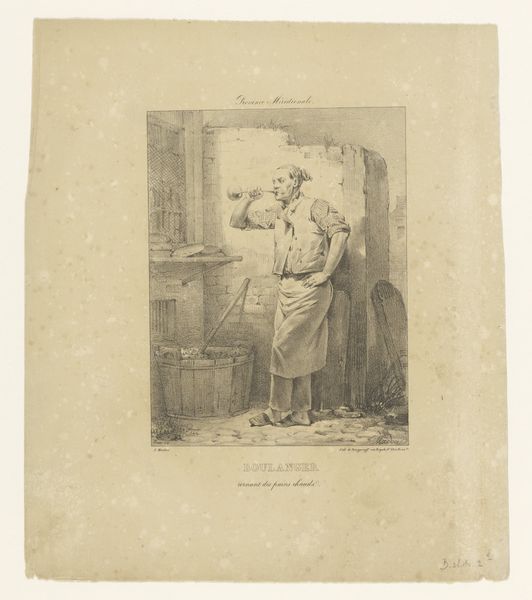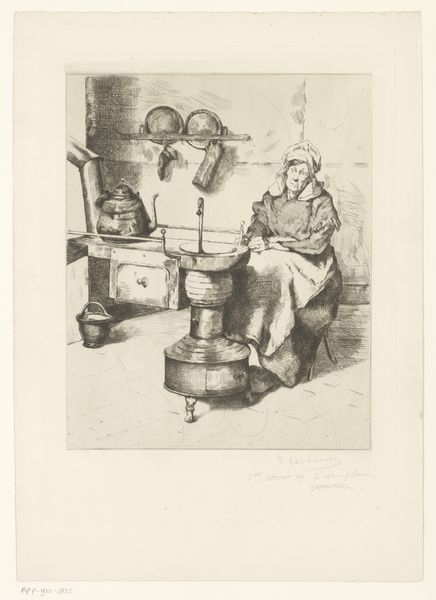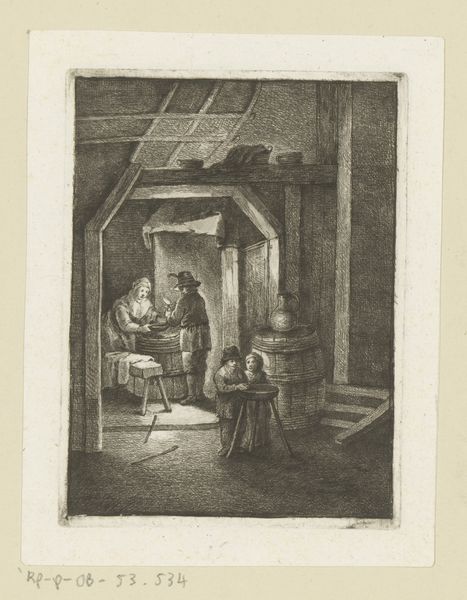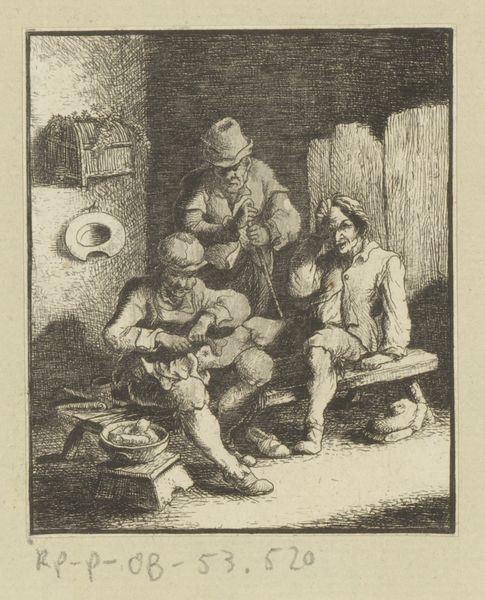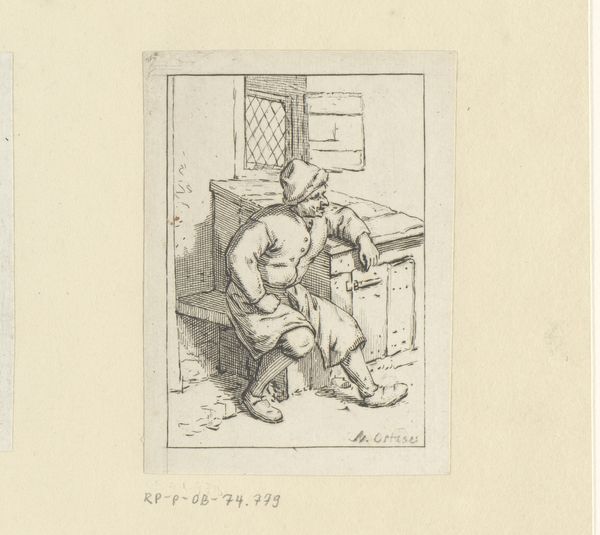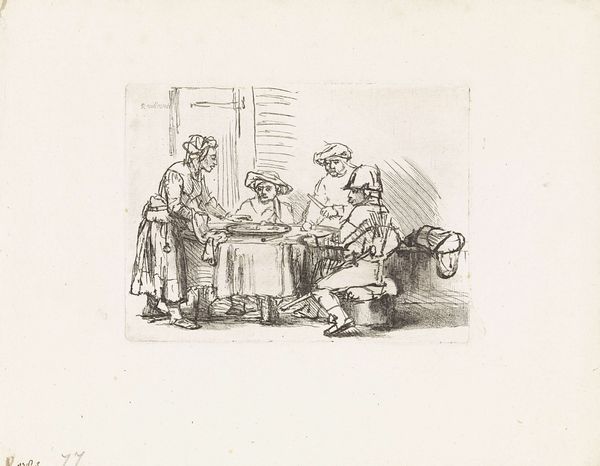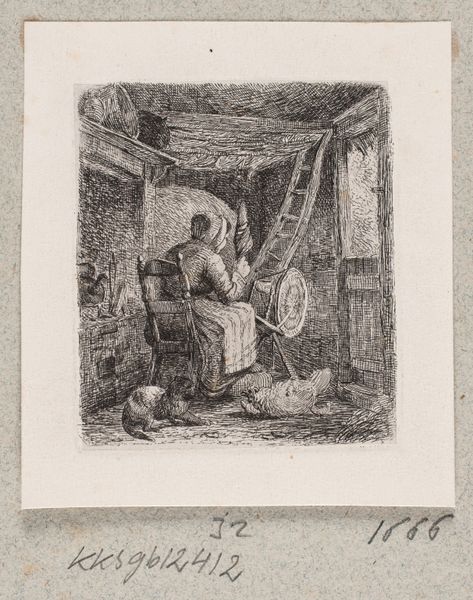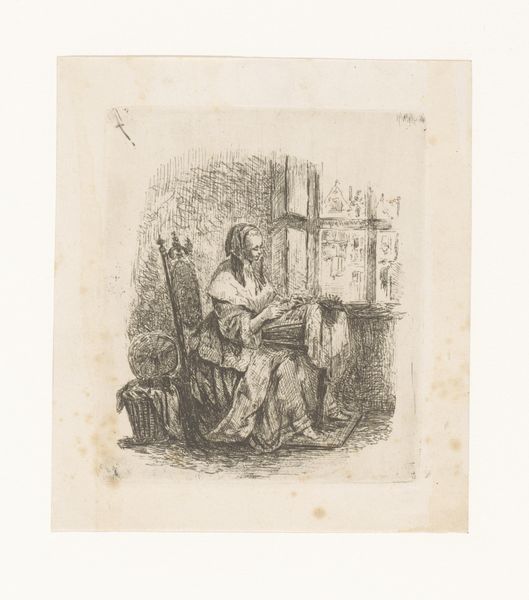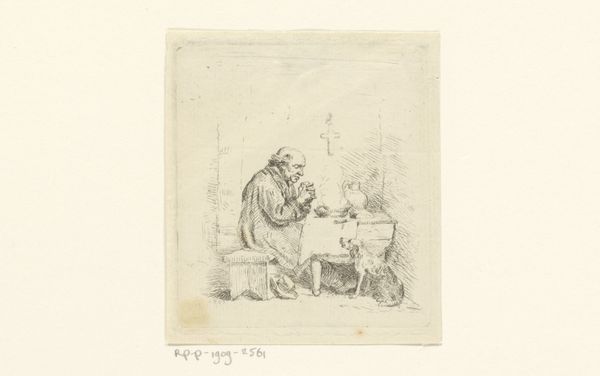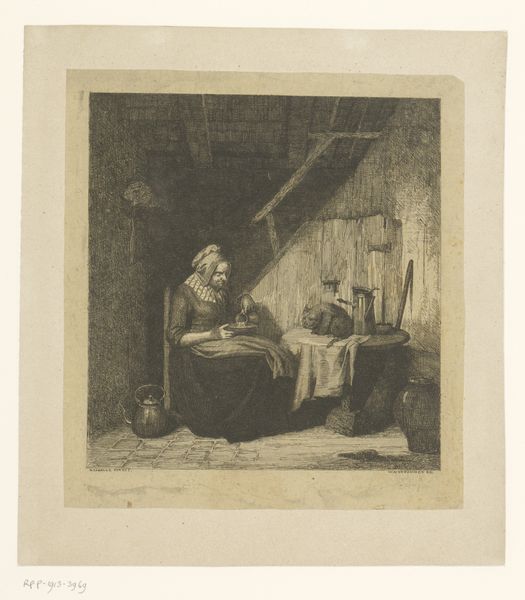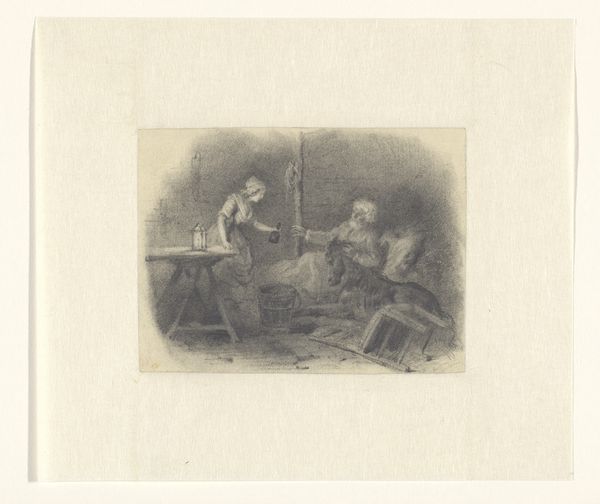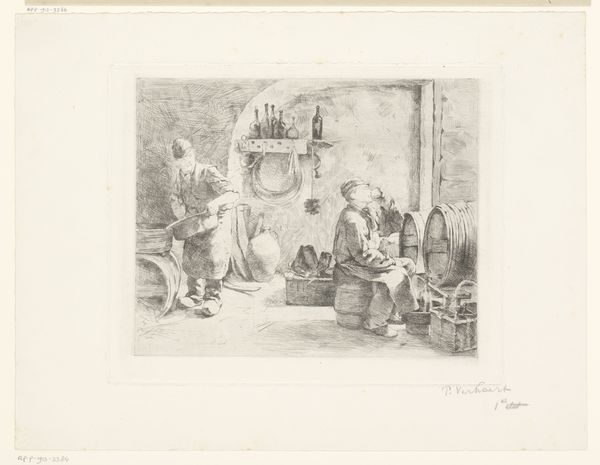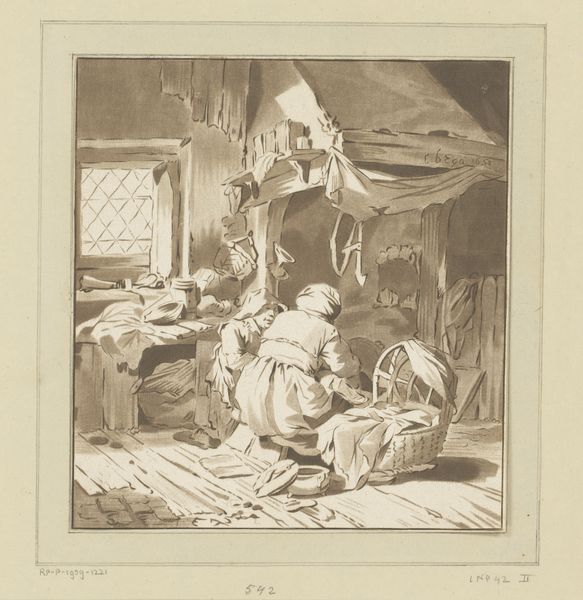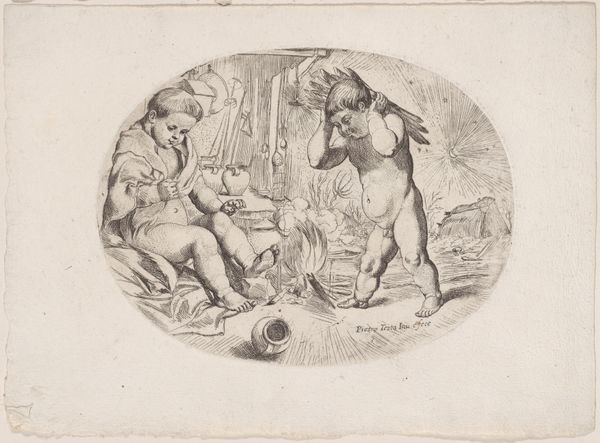
drawing, pencil
#
pencil drawn
#
drawing
#
aged paper
#
toned paper
#
light pencil work
#
narrative-art
#
dutch-golden-age
#
pencil sketch
#
sketch book
#
figuration
#
personal sketchbook
#
pencil
#
sketchbook drawing
#
pencil work
#
genre-painting
#
storyboard and sketchbook work
Dimensions: height 218 mm, width 174 mm
Copyright: Rijks Museum: Open Domain
Editor: This pencil drawing, “Man die een jonge waardin aanhaalt,” from somewhere between 1641 and 1700, is an intriguing scene of figures in what looks like a Dutch Golden Age tavern. It has a rough, sketched quality that almost feels voyeuristic. What do you see in this piece? Curator: Indeed. The drawing's strength lies in its snapshot quality. While the immediate scene suggests a simple tavern encounter, consider the long shadow play, culturally. Dutch genre scenes of this era frequently used taverns as symbolic spaces, places of both social interaction and moral ambiguity. Do you notice the contrast between the light falling on the young woman and the shadowy corners? Editor: Yes, there's a strong contrast. The light definitely highlights the interaction between the man and the young woman. It almost feels staged, even in this rough sketch format. Curator: Exactly. And that’s key. Think about how artists like Rembrandt used light not just for illumination, but to convey psychological depth and narrative emphasis. Here, even in the absence of precise details, the artist evokes a sense of underlying tension or a story unfolding beyond what we immediately see. The symbols are more implicit. What does the half-open cupboard signify, filled with indeterminate objects? Editor: Perhaps secrets? Hidden things? The drawing style itself feels almost like a coded message, something quick and unpolished that reveals more than it conceals. Curator: Precisely. These ‘sketches’ often served as moral lessons embedded in the visual culture. The composition invites us to interpret these figures, their relationships, and the possible consequences within this small, dimly lit space. The hat cast to the side could signify… Editor: Loss of control? Abandonment? This seemingly simple genre scene is full of possible interpretations! It highlights how art can capture cultural attitudes of a period even in an intimate format like a drawing. Curator: It does, doesn’t it? It reveals the persistent themes of human interaction, moral judgment, and the enduring power of visual symbols across time.
Comments
No comments
Be the first to comment and join the conversation on the ultimate creative platform.
